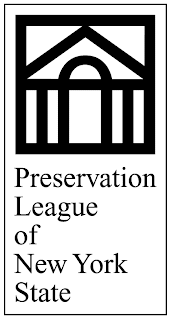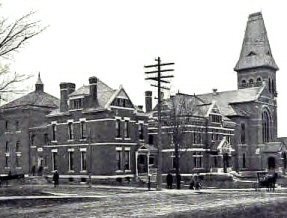 Enhancing Main Street: Making Upper Floors Work Again is a free workshop that will be presented by the Preservation League of New York State on Tuesday, September 20, 2011 from 9:00 am – 3:30 pm at the Saranac Laboratory, 89 Church Street, Saranac Lake, NY.
Enhancing Main Street: Making Upper Floors Work Again is a free workshop that will be presented by the Preservation League of New York State on Tuesday, September 20, 2011 from 9:00 am – 3:30 pm at the Saranac Laboratory, 89 Church Street, Saranac Lake, NY.
This program will provide immediately useful information for property owners, developers, and preservation professionals including historic site managers, architects, consultants and accountants dealing with preservation project financing.
This workshop is in very high demand across New York State and this is the only time it is being offered in the North Country in 2011. While the workshop is free, seating is limited, and participants must register by Friday, September 16, 2011 for the 9/20 program.
The workshop’s featured presenters will include:
* Historic Preservation Program Analyst William Krattinger from the NYS Historic Preservation Office, who will discuss the advantages of Historic District designation-
* Joe Fama, architect and Executive Director of the Troy Architectural Program in Troy, who will explain how New York’s building codes and preservation can work together-
* Karl Gustafson of NYS Homes and Community Renewal, who will provide information on the New York State Main Street Program- and
* Gary Beasley, Executive Director of Neighbors of Watertown, who will discuss making the best use of upper floors.
Enhancing Main Street: Making Upper Floors Work Again is presented by the Preservation League of New York State and sponsored by Historic Saranac Lake- Adirondack Architectural Heritage- Empire State Development Corp., NYS Office of Parks, Recreation & Historic Preservation- and NYS Homes and Community Renewal.
 On May 12, 1903, Franklin County attorney Robert M. Moore was at wit’s end. After two years of haggling, all possibilities had been exhausted, and he knew his client was in serious trouble. There was nothing left but a claim of insanity. If that failed, a man was sure to die.
On May 12, 1903, Franklin County attorney Robert M. Moore was at wit’s end. After two years of haggling, all possibilities had been exhausted, and he knew his client was in serious trouble. There was nothing left but a claim of insanity. If that failed, a man was sure to die.







